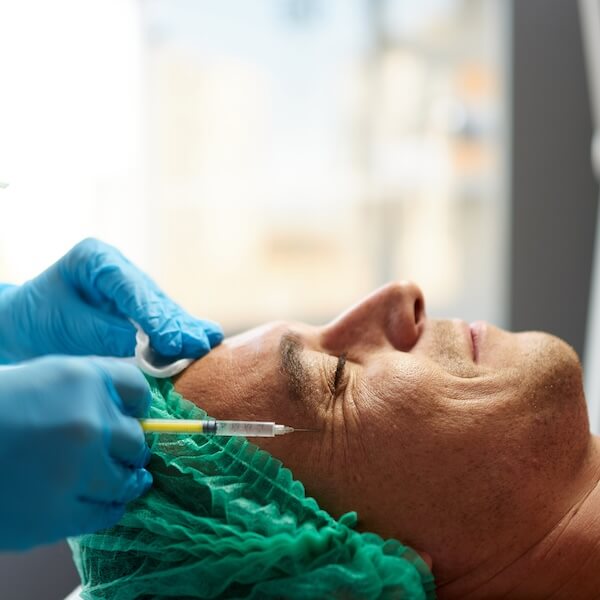Where Sculptra can be Injected?
Sculptra stands as a revolutionary dermal filler utilized to enhance facial volume and address facial wrinkles.
Distinguished by its key ingredient, poly-L-lactic acid, Sculptra not only fills but significantly stimulates collagen production within the body.
This process aids in achieving a more youthful appearance by enhancing the body's natural collagen production.
As we delve into the specifics of Sculptra, we'll explore its composition, benefits, and the treatment areas where it can be effectively injected.
Understanding Sculptra and Its Components
What is Sculptra?
Sculptra in Dallas, primarily composed of poly-L-lactic acid (PLLA), is a unique dermal filler recognized for its ability to stimulate collagen production within the deep dermis layers of the skin.
Unlike traditional dermal fillers like hyaluronic acid fillers that simply add volume, Sculptra works by initiating a gradual process of collagen stimulation, promoting natural collagen production over time. This leads to a more youthful appearance and improves skin texture.

Key Component: Poly-L-lactic acid
The active component, PLLA, is a biocompatible, biodegradable synthetic substance. Safe and FDA-approved, it has been used in dissolvable sutures and other medical devices for years.
In Sculptra treatments, PLLA acts as a collagen stimulator, embedding within the tissue and prompting the skin to produce more collagen. This addresses facial wrinkles, fine lines, and skin discoloration by reinforcing the skin’s structural foundation.
Differentiation from Other Dermal Fillers
Sculptra’s approach to facial rejuvenation is distinct. While hyaluronic acid treatments provide immediate results by filling in lost volume, Sculptra offers a long-term solution by enhancing the skin's natural regenerative capabilities.
Sculptra injections lead to a gradual increase in skin volume and density, restoring what was lost to the aging process.

The treatment is known for its ability to achieve natural-looking results without the need for frequent retreatments, making it a preferred choice for those seeking sustainable aesthetic improvements.
This innovative treatment requires a series of treatment sessions, typically spread over a few months, to allow for the progressive development of collagen.
Initial consultations with a healthcare provider will determine the treatment plan, including how many treatments are needed based on individual cosmetic goals and the condition of the treatment area.
This tailored approach ensures that natural collagen is enhanced effectively, catering to the specific needs of each patient.
The Science Behind Sculptra
How Sculptra Stimulates Collagen Production
Sculptra's mechanism centers on addressing collagen loss through a series of injectable treatments that deposit poly-L-lactic acid (PLLA) directly into the deep dermis layer of the skin.
As a dermal filler, Sculptra differs by focusing on enhancing the fibrous protein matrix that supports skin elasticity and volume. Once Sculptra is injected, it begins to interact with the local tissue, causing a mild inflammatory response that signals the body to start producing new collagen fibers.
This aesthetic treatment leverages the body’s healthy immune system to effectively regenerate lost collagen and revitalize the underlying structural integrity of the skin.
This process not only diminishes the appearance of lines and wrinkles, particularly around areas like the smile lines, but also improves the overall skin texture, making it appear more youthful and supple.
Collagen's Role in Maintaining Youthful Skin
Collagen is the scaffold of the skin, providing firmness and structure. As we age, collagen production declines, leading to cosmetic concerns such as lines and wrinkles and sagging skin.
Sculptra's role as a collagen stimulator is pivotal in reversing these signs of aging by promoting natural collagen production over an extended period, typically up to two years post the initial treatment.

This innovative approach to cosmetic injection requires minimal downtime, making it an attractive option for those seeking effective solutions without the invasiveness of plastic surgery.
Moreover, Sculptra aesthetic treatments are tailored to match the unique needs of each patient, ensuring that results are not only effective but also align with their cosmetic goals. With regular treatment sessions, patients can see lasting improvements in skin hydration and firmness, marking a significant advancement in non-surgical facial rejuvenation techniques.
Safety and Efficacy of Sculptra
Understanding the Risks and Safety Profile of Sculptra
Sculptra, as an injectable treatment involving poly L-lactic acid, is renowned for its high safety profile, especially when administered by a skilled healthcare provider.
The procedure itself is relatively straightforward and typically involves a topical anesthetic to minimize discomfort at the injection site. However, like all medical treatments, it's not entirely devoid of risks.
The primary concerns with Sculptra involve minor side effects such as bruising, swelling, or redness at the injection sites, which generally subside within a few days.
More rare complications can include small lumps under the skin, which can often be mitigated by proper massaging techniques as directed by your practitioner. It is also crucial to disclose any use of blood thinners to your doctor before treatment to manage bruising risks.
Allergy testing is generally not required for Sculptra, given its synthetic nature, which significantly reduces the risk of allergic reactions compared to other dermal fillers.
This aspect is particularly crucial for patients with sensitive systems or those concerned about allergic reactions to animal-derived or natural substances.
Effectiveness in Stimulating Natural Collagen Production
Sculptra's effectiveness extends beyond temporary cosmetic enhancements. As a collagen stimulator, it works over several months to help the body rebuild its natural collagen, offering improvements that last up to two years. This gradual process ensures that the enhancements in facial volume and the reduction of smile lines and other wrinkles appear natural and not overdone.
Studies and clinical trials have repeatedly shown that Sculptra treatments result in increased collagen production and significantly improved skin texture and firmness. The ability to stimulate collagen production makes Sculptra a long-term solution for cosmetic rejuvenation, addressing collagen loss with a natural-looking outcome.
By promoting natural collagen production and not just filling lines and wrinkles temporarily, Sculptra offers a more sustainable approach to facial rejuvenation. This cosmetic injection provides a comprehensive solution to aging skin concerns, backed by a strong track record of safety and satisfaction among patients seeking a youthful appearance without undergoing invasive procedures.
Ideal Candidates for Sculptra Treatment
Who Should Consider Sculptra Injections?
Sculptra is ideally suited for individuals looking to address moderate to severe facial wrinkles and folds, particularly those related to aging such as smile lines, marionette lines, and other creases that deepen over time. Candidates for Sculptra typically have a healthy immune system and are seeking long-term results rather than quick fixes.
The treatment is also beneficial for those experiencing collagen loss due to natural aging or environmental factors, leading to a decrease in facial volume and skin elasticity. Sculptra aesthetic treatments work progressively, making them an excellent option for patients who prefer gradual, more natural-looking results.

Contraindications and Considerations
While Sculptra offers significant benefits, it's not suitable for everyone. Individuals with a history of severe allergies or those allergic to any of its components should avoid this treatment. Similarly, Sculptra is not recommended for those with active skin infections or inflammations at the planned injection sites.
Patients on blood thinners or those with bleeding disorders should discuss their conditions with a healthcare provider to assess potential risks. Additionally, those with a history of keloid formation or hypertrophic scarring may need to consider other options as Sculptra could exacerbate these conditions.
Comparing Sculptra to Other Treatments
Sculptra vs. Hyaluronic Acid Fillers
Unlike hyaluronic acid fillers which provide immediate volume addition, Sculptra works by gradually stimulating the body's natural collagen production. While hyaluronic acid fillers are excellent for short-term results, Sculptra offers a more enduring solution by addressing the underlying causes of facial aging through collagen regeneration.
Benefits over Other Aesthetic Treatments
Compared to laser treatments and other invasive cosmetic injections, Sculptra minimizes patient downtime and discomfort.
It does not require allergy testing and has a lower risk of side effects, making it a safer choice for long-term facial rejuvenation.
Its ability to integrate with the body's natural processes to restore volume and improve skin texture also leads to outcomes that are both effective and subtle.

Longevity and Maintenance of Sculptra
How Long Do the Effects of Sculptra Last?
The effects of Sculptra are long-lasting, with results that can be maintained for up to two years following the initial series of treatment sessions. This duration surpasses many other dermal fillers, offering a prolonged benefit from a single treatment regimen.
The Gradual Process of Collagen Production
The collagen production stimulated by Sculptra develops over time, which means the visible results are not immediate but build gradually. Patients often see a noticeable improvement in their facial volume and skin elasticity within a few months after the first treatment, with continued enhancements as the treatment sessions progress.
This gradual process ensures the changes appear more natural and are sustained over a longer period, helping to prevent the sudden shifts in appearance that can occur with other treatments. Regular follow-up appointments are crucial to monitor the progress and make any necessary adjustments to the treatment plan.
